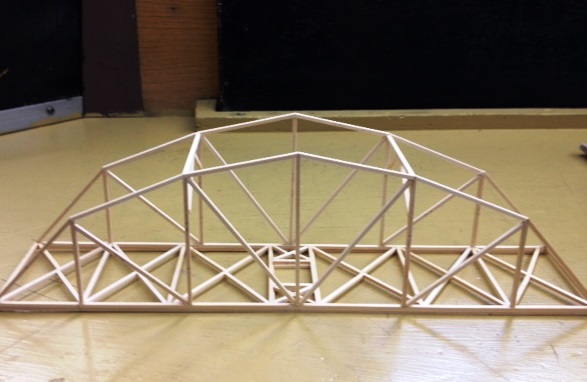Courses by Software
Courses by Semester
Courses by Domain
Tool-focused Courses
Machine learning
POPULAR COURSES
Success Stories
Week 9 - FVM Literature Review
Finite Volume Method (FVM) is a numerical technique for solving partial differential equations governing the phenomena. The method involves discretizing the domain into smaller volumes. These control volumes are connected by common faces. The governing equation in integral form is applied for all the control volumes followed…
Jaswanth Kalyan Kumar Alapati
updated on 26 Dec 2021
Finite Volume Method (FVM) is a numerical technique for solving partial differential equations governing the phenomena. The method involves discretizing the domain into smaller volumes. These control volumes are connected by common faces. The governing equation in integral form is applied for all the control volumes followed by appropriate integral transformations (like Gauss divergence theorem). The integral then leads to a set of linear equations of the quantities described by the differential equations. The linear equations are solved to obtain the solution.
In FDS, the domain is discretized into nodes and the properties are determined at the nodes. No conservation of quantity is used in FDM. In FVM, the domain is discretized into finite volumes with faces. The properties are usually stored at the cell centers. Conservation of quantity is applicable in FVM.
Consider the 1-D steady-state heat diffusion equation. Also, consider the domain to be divided into smaller control volumes. Since the domain is 1-D, each control volume has two faces, left (West) and right (East) represented as w and e below. W and E refer to the neighboring volumes on left and right respectively. Consider the control volume named P of volume dV. The values of the properties to be determined are stored at the center of the control volumes.

Apply the above equation in the integral form to the control volume P.
dV is the volume of the finite volume element P. After applying the Gauss-divergence theorem it results as following
.
The surface integral is evaluated at all the faces (east and west for 1-D).
where subscript e and w mean east and west faces.
Here comes the use of interpolation schemes because the properties are known at only centers of volume. With interpolation schemes, values at faces are determined from neighboring centers.
Such schemes include First order Upwind scheme, Power-law, Second-order Upwind scheme, QUICK, etc.
The first-order upwind scheme uses the upstream cell center value for a face. Depending on the flow, an appropriate interpolation scheme is used. Similarly, the derivatives at faces are also computed using neighboring cell center values.
The purpose of flux limiter schemes is to restrict the derivatives to acceptable values like in cases of shocks, discontinuities in the domain. Usually, they are used in higher-order schemes.
The gradients across a face (in higher-order schemes containing discontinuities) is determined using gradients obtained (if possible) by low and high-resolution schemes and an appropriate flux limiter function evaluated at that face.
Leave a comment
Thanks for choosing to leave a comment. Please keep in mind that all the comments are moderated as per our comment policy, and your email will not be published for privacy reasons. Please leave a personal & meaningful conversation.
Other comments...
Be the first to add a comment
Read more Projects by Jaswanth Kalyan Kumar Alapati (8)
Week 1- Mixing Tee
This assignment aims to evaluate the mixing effectiveness of a Tee joint with two different outlet pipe lengths, namely small and long. The required Tee geometry is provided, and the interior volume for CFD analysis is extracted as shown below. Tee geometry with shorter outlet pipe: Extracted…
03 Sep 2022 08:13 PM IST
Week 12 - Validation studies of Symmetry BC vs Wedge BC in OpenFOAM vs Analytical H.P equation
Unlike in the previous assignment, where the simulation is performed using a transient solver icoFoam, the simulation is carried out using a steady-state solver simpleFoam since the emphasis is on the steady-state flow field. This assignment aims to compare the boundary conditions of Wedge and Symmetry…
11 Jan 2022 11:09 AM IST
Week 11 - Simulation of Flow through a pipe in OpenFoam
The following is the simulation of a laminar flow of an incompressible fluid through the pipe in OpenFoam. The following figure depicts the physical situation of the flow. For a laminar flow, the hydrodynamic length, , where is pipe diameter, and is Reynolds number…
07 Jan 2022 10:13 AM IST
Week 9 - FVM Literature Review
Finite Volume Method (FVM) is a numerical technique for solving partial differential equations governing the phenomena. The method involves discretizing the domain into smaller volumes. These control volumes are connected by common faces. The governing equation in integral form is applied for all the control volumes followed…
26 Dec 2021 07:15 AM IST
Related Courses






0 Hours of Content

Skill-Lync offers industry relevant advanced engineering courses for engineering students by partnering with industry experts.
Our Company
4th Floor, BLOCK-B, Velachery - Tambaram Main Rd, Ram Nagar South, Madipakkam, Chennai, Tamil Nadu 600042.
Top Individual Courses
Top PG Programs
Skill-Lync Plus
Trending Blogs
© 2025 Skill-Lync Inc. All Rights Reserved.







